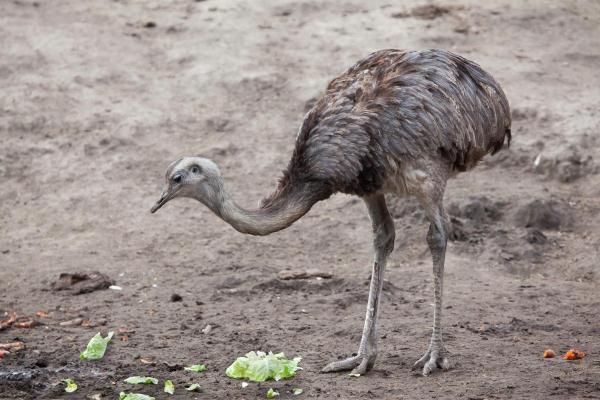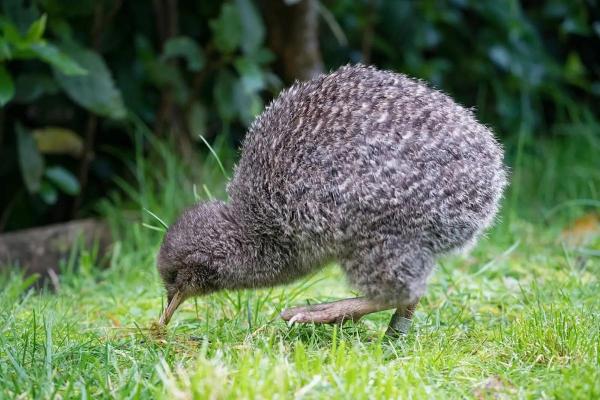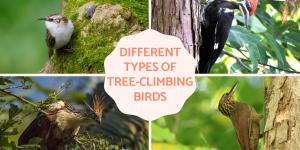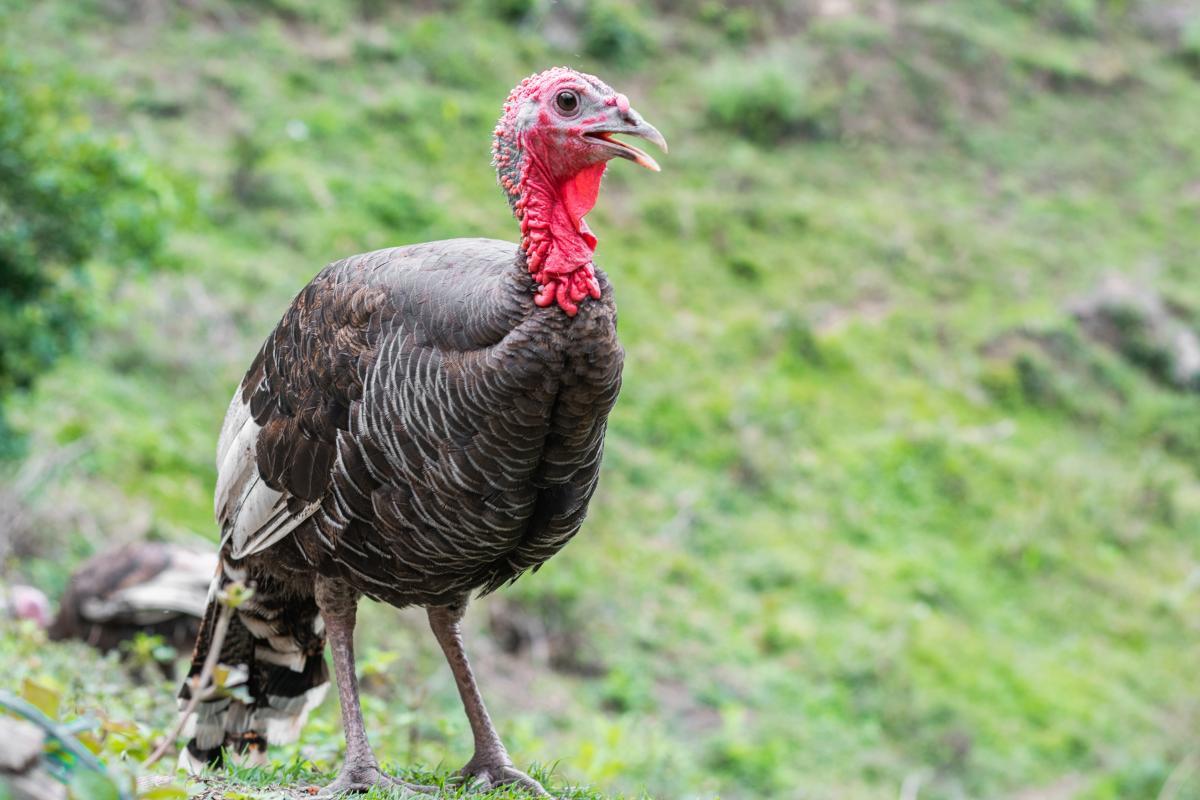Guide to Ostrich-Like Birds


The ostrich is undoubtedly one of the most recognizable flightless birds. However, it's not alone in its unique characteristics. Many other bird species share striking similarities with the iconic ostrich. From their towering stature and powerful legs to their remarkable adaptations, these ostrich-like birds inhabit diverse regions and ecosystems around the globe.
In this article, we’ll explore 10 birds that resemble ostriches in various ways, from their physical traits to their behavior.
- The greater rhea (Rhea americana)
- Lesser rhea (Rhea pennata)
- Emu (Dromaius novaehollandiae)
- Southern cassowary (Casuarius casuarius)
- Dwarf cassowary (Casuarius bennetti)
- Northern cassowary (Casuarius unappendiculatus)
- Wild turkey (Meleagris gallopavo)
- Great bustard (Otis tarda)
- Great tinamou (Tinamus major)
- Greater spotted kiwi (Apteryx haastii)
The greater rhea (Rhea americana)
The greater rhea is a flightless bird native to South America, including countries such as Brazil, Bolivia, Paraguay, and Argentina. Fossil evidence suggests that rheas existed millions of years ago, making them one of the oldest bird lineages.
It thrives in open habitats with minimal vegetation, such as grasslands, open forests, and cultivated fields.
As an ostrich-like bird, the greater rhea boasts an oval body, a long, graceful neck, and an average weight of 32 kilograms (70.5 pounds) with a length of 1.5 meters (4.9 feet). Its plumage is a combination of brownish-gray on the head, neck, and back, contrasting with black feathers on the base of the neck, front, and back. Despite its inability to fly, it possesses large wings.
These birds are excellent runners, capable of reaching speeds of up to 60 km/h (37 mph).
Due to the hunting of adults and the collection of eggs for commercial purposes, the greater rhea is currently classified as "Near Threatened" on the IUCN Red List.

Lesser rhea (Rhea pennata)
The lesser rhea, also known as Darwin's rhea, is a flightless bird native to South America, with a distribution that encompasses Argentina, Bolivia, Chile, and Peru.
It thrives in diverse habitats, including steppes, scrublands, wetlands, prairies, and tall grasslands. They are omnivores, feeding on a variety of plants, insects, and small vertebrates.
Reaching a height of 90 to 100 centimeters (35.4 to 39.4 inches) and a weight of approximately 15 to 30 kilograms (33 to 66 pounds), the lesser rhea is slightly smaller than its larger cousin, the greater rhea. Despite its inability to fly, it possesses exceptionally large wings, even exceeding those of other similar birds. Its plumage is predominantly brown with white mottling.
Also, unlike their larger cousins, lesser rheas are typically solitary animals, coming together only for mating or breeding.
Although currently classified as "Least Concern" by the IUCN Red List, the lesser rhea faces threats due to commercialization.
Be sure to read this other article to learn more about rheas, another incredible member of the flightless bird family

Emu (Dromaius novaehollandiae)
The emu is the world's third-largest bird after ostriches. Resembling ostriches, emus can reach a height of 1.90 meters (6.2 feet) and weigh up to 40 kilograms (88 pounds). Their plumage is a dark brown color, and their wings are very small and underdeveloped. Interestingly, emus have bare necks, which helps them regulate their body temperature.
Endemic to Australia, several subspecies of emus became extinct following the continent's colonization. These flightless birds inhabit savannah woodlands, grasslands, and areas with access to water. Despite their large size, emus are surprisingly good swimmers and are often found near water bodies.
Currently, the emu is classified as Least Concern, with a stable population.
Did you know that even flightless birds have wings? Uncover the fascinating reasons for this in our next article.

Southern cassowary (Casuarius casuarius)
The southern cassowary is a large, flightless bird native to Australia, Indonesia, and Papua New Guinea. It thrives in diverse habitats, including tropical rainforests, savannah forests, mangroves, and fruit plantations.
Known for its robust build and long legs, the southern cassowary can reach a height of 1 to 1.70 meters (3.3 to 5.6 feet) and a weight of 29 to 59 kilograms (64 to 130 pounds). Cassowaries are considered one of the most dangerous birds in the world due to their powerful kicks, which can be fatal.
A distinctive feature is the presence of two red protuberances hanging from its neck. Its wings are relatively small, and its plumage, resembling thick fur, is predominantly dark brown or black. The neck and head are bare, showcasing vibrant blue and red coloration. The feathers of the southern cassowary have a blue-green iridescence that is visible when the bird moves.
Despite its imposing appearance, the southern cassowary is currently classified as "Least Concern" on the IUCN Red List.

Dwarf cassowary (Casuarius bennetti)
The dwarf cassowary is the smallest of the three extant cassowary species. Reaching a maximum height of approximately 1.35 meters (4.4 feet) and an average weight of 18 kilograms (40 pounds), the dwarf cassowary is noticeably smaller than its larger relatives. Its plumage is a rough, black color, and its neck and head are bare, showcasing a distinctive blue and red coloration.
Endemic to New Guinea and found on other islands in the archipelago, it prefers habitats with relatively high elevations, steep terrain, and dense vegetation. In fact, they are well-adapted to their mountainous, forested habitats and are skilled climbers.
The dwarf cassowary was previously classified as "Near Threatened" by the IUCN from 2004 to 2013. This designation was attributed to pressures such as habitat loss, habitat degradation, hunting for food, and the practice of keeping these birds in captivity. However, in 2015, the dwarf cassowary's conservation status was downgraded to "Least Concern."
Curious about the wonders of bird evolution? Discover a surprising aspect of feathered friends in our related article.

Northern cassowary (Casuarius unappendiculatus)
The northern cassowary is a flightless bird endemic to Indonesia and Papua New Guinea. It primarily inhabits lowland and swamp forests, although its ecological preferences are not fully understood.
Reaching a height of approximately 1.8 meters (5.9 feet), the northern cassowary exhibits sexual dimorphism in size, with males weighing around 40 kilograms (88 pounds) and females exceeding 50 kilograms (110 pounds).
A distinctive feature is its bright blue head and the presence of red flesh running down the sides of its neck. Its body plumage is predominantly black. They are known for their loud, deep calls that can be heard from a distance.
Despite its limited understanding, the northern cassowary is currently classified as "Least Concern" on the IUCN Red List.

Wild turkey (Meleagris gallopavo)
The wild turkey is a native bird species of North America, found in Canada and the United States. It has been successfully introduced to other regions, including Australia, New Zealand, and the Hawaiian Islands.
Wild turkeys thrive in a variety of habitats, such as broadleaf forests, mixed forests, grasslands, and seasonal marshes. They are highly intelligent animals and are known for their problem-solving abilities.
Although not directly related to ostriches, wild turkeys share some similarities in size and physical characteristics. Males, known as toms, can weigh between 6.8 and 11 kilograms (15 to 24 pounds) and reach a height of 1.25 meters (4.1 feet). Females, referred to as hens, are smaller, weighing between 3.6 and 5.4 kilograms (7.9 to 11.9 pounds) and reaching a height of approximately 95 centimeters (37.4 inches).
Due to its widespread distribution and healthy populations, the wild turkey is currently classified as "Least Concern" on the IUCN Red List.

Great bustard (Otis tarda)
The great bustard is a large bird native to Asia and Europe and is one of the largest flying birds in the world. It primarily inhabits steppes but has also adapted to agricultural fields, plains, and grasslands.
Males are significantly larger than females. They typically measure between 90 and 105 centimeters (35.4 to 41.3 inches) in height and weigh between 5.8 and 18 kilograms (12.8 to 39.7 pounds), although regional variations exist. Females are smaller, measuring between 75 and 85 centimeters (29.5 to 33.5 inches) in height and weighing between 3 and 8 kilograms (6.6 to 17.6 pounds).
The great bustard's plumage is predominantly brown, with black and white markings above and a lighter underside. Males engage in elaborate courtship displays, including inflating their chest sacs and strutting around.
Due to habitat loss and other human-induced threats, the great bustard is currently classified as "Endangered" on the IUCN Red List.

Great tinamou (Tinamus major)
The great tinamou is a flightless bird native to South America. Its range includes Belize, Bolivia, Brazil, Colombia, Costa Rica, Ecuador, French Guiana, Guatemala, Guyana, Honduras, Mexico, Nicaragua, Panama, Peru, Suriname, and Venezuela. It thrives in dense rainforests, secondary forests, and plantations. Great tinamous have a varied diet that includes fruits, insects, and small vertebrates.
Although it may not bear an immediate resemblance to ostriches, the great tinamou shares a similarly rounded body shape. However, it is significantly smaller, with an average length of 44 centimeters (17.3 inches). Females are typically heavier than males, with average weights ranging from 960 grams to 1.2 kilograms (2.1 to 2.6 pounds).
They are known for their loud, distinctive calls, which can be heard from a distance.
The great tinamou is currently classified as "Least Concern" on the IUCN Red List.
Want to know more about other birds that have completely lost the ability to fly? Uncover the secrets behind these unique species in our related article.

Greater spotted kiwi (Apteryx haastii)
The greater spotted kiwi is an endemic bird of New Zealand, found in forested mountains, grasslands, beech forests, and scrublands. Despite its resemblance to ostriches, it exhibits distinct physical characteristics.
Kiwis are primarily nocturnal animals, spending most of their time foraging at night. They have long, sensitive beaks that they use to probe the soil for invertebrates.
The greater spotted kiwi is relatively small, weighing between 2.4 and 3.3 kilograms (5.3 to 7.3 pounds) and measuring 44 to 55 centimeters (17.3 to 21.7 inches) in length. Its plumage is a mix of gray, brown, and whitish feathers. Their feathers are more hair-like than those of other birds, an adaptation to their dense forest habitats.
The introduction of exotic species to New Zealand has posed a significant threat to the greater spotted kiwi, leading to its classification as "Vulnerable" on the IUCN Red List. Discover more about the reasons behind the endangered status of kiwis in this other article.

If you want to read similar articles to Guide to Ostrich-Like Birds, we recommend you visit our Facts about the animal kingdom category.
- Animal Diversity Web. (2020). Available at: https://animaldiversity.org/
- IUCN. (2024). The IUCN Red List of Threatened Species . Version 2024-1. Available at: https://www.iucnredlist.org















